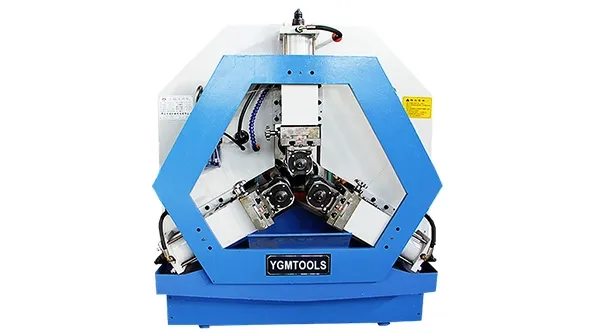
-
 Afrikaans
Afrikaans -
 Albanian
Albanian -
 Amharic
Amharic -
 Arabic
Arabic -
 Armenian
Armenian -
 Azerbaijani
Azerbaijani -
 Basque
Basque -
 Belarusian
Belarusian -
 Bengali
Bengali -
 Bosnian
Bosnian -
 Bulgarian
Bulgarian -
 Catalan
Catalan -
 Cebuano
Cebuano -
 Corsican
Corsican -
 Croatian
Croatian -
 Czech
Czech -
 Danish
Danish -
 Dutch
Dutch -
 English
English -
 Esperanto
Esperanto -
 Estonian
Estonian -
 Finnish
Finnish -
 French
French -
 Frisian
Frisian -
 Galician
Galician -
 Georgian
Georgian -
 German
German -
 Greek
Greek -
 Gujarati
Gujarati -
 Haitian Creole
Haitian Creole -
 hausa
hausa -
 hawaiian
hawaiian -
 Hebrew
Hebrew -
 Hindi
Hindi -
 Miao
Miao -
 Hungarian
Hungarian -
 Icelandic
Icelandic -
 igbo
igbo -
 Indonesian
Indonesian -
 irish
irish -
 Italian
Italian -
 Japanese
Japanese -
 Javanese
Javanese -
 Kannada
Kannada -
 kazakh
kazakh -
 Khmer
Khmer -
 Rwandese
Rwandese -
 Korean
Korean -
 Kurdish
Kurdish -
 Kyrgyz
Kyrgyz -
 Lao
Lao -
 Latin
Latin -
 Latvian
Latvian -
 Lithuanian
Lithuanian -
 Luxembourgish
Luxembourgish -
 Macedonian
Macedonian -
 Malgashi
Malgashi -
 Malay
Malay -
 Malayalam
Malayalam -
 Maltese
Maltese -
 Maori
Maori -
 Marathi
Marathi -
 Mongolian
Mongolian -
 Myanmar
Myanmar -
 Nepali
Nepali -
 Norwegian
Norwegian -
 Norwegian
Norwegian -
 Occitan
Occitan -
 Pashto
Pashto -
 Persian
Persian -
 Polish
Polish -
 Portuguese
Portuguese -
 Punjabi
Punjabi -
 Romanian
Romanian -
 Russian
Russian -
 Samoan
Samoan -
 Scottish Gaelic
Scottish Gaelic -
 Serbian
Serbian -
 Sesotho
Sesotho -
 Shona
Shona -
 Sindhi
Sindhi -
 Sinhala
Sinhala -
 Slovak
Slovak -
 Slovenian
Slovenian -
 Somali
Somali -
 Spanish
Spanish -
 Sundanese
Sundanese -
 Swahili
Swahili -
 Swedish
Swedish -
 Tagalog
Tagalog -
 Tajik
Tajik -
 Tamil
Tamil -
 Tatar
Tatar -
 Telugu
Telugu -
 Thai
Thai -
 Turkish
Turkish -
 Turkmen
Turkmen -
 Ukrainian
Ukrainian -
 Urdu
Urdu -
 Uighur
Uighur -
 Uzbek
Uzbek -
 Vietnamese
Vietnamese -
 Welsh
Welsh -
 Bantu
Bantu -
 Yiddish
Yiddish -
 Yoruba
Yoruba -
 Zulu
Zulu
High-Quality Reed Thread Roller for Precision Threading Applications
Understanding the Reed Thread Roller Product A Comprehensive Overview
In the world of manufacturing, thread rolling is an essential process that enhances the integrity and performance of fasteners. Among the various equipment available for this purpose, the Reed Thread Roller stands out due to its innovative design and robust performance. This article will provide an in-depth look at the Reed Thread Roller product, its features, applications, and advantages over conventional thread forming methods.
What is Thread Rolling?
Thread rolling is a cold working process used to create threads on a workpiece. Unlike machining processes, which remove material to create threads, thread rolling deforms the surface material to create a thread profile. This method not only produces stronger threads but also improves the fatigue resistance of the finished product. The Reed Thread Roller is engineered to facilitate this process with maximum efficiency and precision.
Key Features of Reed Thread Roller
1. Precision Engineering Reed Thread Rollers are designed with high precision in mind. The rollers are manufactured to exact specifications, which ensures consistent and accurate thread profiles. This precision is fundamental in industries where thread quality is critical.
2. Durability Constructed from high-quality materials, the Reed Thread Roller is built to withstand the rigors of continuous operation. This durability translates to reduced maintenance costs and longer equipment lifespans, making it a worthwhile investment for manufacturers.
3. Versatility One of the standout features of the Reed Thread Roller is its versatility. It can accommodate a variety of materials, including steel, aluminum, and brass, which makes it suitable for a wide range of applications. Whether producing screws, bolts, or specialty fasteners, the Reed Thread Roller can be adapted to meet specific production needs.
4. User-Friendly Operation The Reed Thread Roller is designed with user-friendliness in mind. With intuitive controls and easy setup procedures, operators can quickly learn to use the machine effectively, reducing downtime and increasing productivity.
reed thread roller product

5. High Production Rate The machine is capable of producing a high volume of threaded products in a short amount of time. This efficiency is crucial for manufacturers looking to meet high demand without compromising on quality.
Applications of Reed Thread Roller
The Reed Thread Roller finds applications across various industries, including automotive, aerospace, and construction. In the automotive sector, for instance, it's used to produce bolts and screws essential for assembling vehicles. In aerospace, high-strength fasteners produced through thread rolling are vital for ensuring the safety and reliability of aircraft components. Similarly, in the construction industry, threaded rods and bolts manufactured using the Reed Thread Roller are critical for structural integrity.
Advantages Over Conventional Thread Methods
The Reed Thread Roller offers numerous advantages over traditional thread cutting methods
- Increased Strength The cold working process enhances the grain structure of the metal, resulting in threads that are stronger and more durable. - Reduced Waste Unlike machining, where material is removed, thread rolling uses the existing material more efficiently, minimizing waste. - Cost-Effectiveness By producing high-quality threads at a faster rate, the Reed Thread Roller can help manufacturers reduce labor and production costs considerably.
Conclusion
The Reed Thread Roller is an invaluable tool for manufacturers seeking to optimize their production of threaded fasteners. Its precision, durability, versatility, and efficiency make it a superior choice compared to traditional thread forming methods. As industries continue to evolve and demand higher-quality products, the Reed Thread Roller is poised to play an essential role in meeting these challenges. By investing in such advanced equipment, manufacturers can enhance their operational efficiency and ultimately contribute to a more robust and competitive market.
